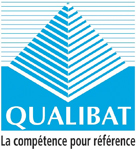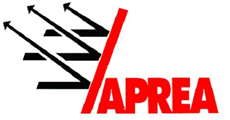Asset Pricing and Portfolio Choice Theory by Kerry Back Books on Google Play
When investors learn expected consumption growth from realized consumption growth, equilibrium prices are more sensitive to consumption shocks and the equity premium is higher. Our books are available by subscription or purchase to libraries and institutions. The capital asset pricing model concentrates on measuring systemic risk and its impact on the value of an asset.
CAPM Example
When a financial analyst values a stock, they use the weighted average cost of capital (WACC) to find the net present value (NPV) of future cash flows. The expected return can also be used as a discount rate to determine the present value of future cash flows from the stock. If the stock price is $75 and the present value of future cash flows using the 16% rate is $75, the stock is fairly valued.
Asset Pricing and Portfolio Choice Theory
Beta is calculated using a regression of historical stock returns. However, historical stock returns don’t follow a normal distribution. Upward and downward price movements are not equally risky, which makes some observers wonder if it’s a completely accurate measure of risk. If your institution is not listed or you cannot sign in to your institution’s website, please contact your librarian or administrator. A higher risk-free rate would increase the cost of capital while a lower rate would reduce it—either would significantly impact the outcome of a CAPM calculation. The CAPM plays a key role in financial modeling and asset valuation.
Viewing your signed in accounts
Investors with quadratic utility have mean‐variance preferences, and investors have mean‐variance preferences when returns are elliptically distributed. Continuous‐time filtering is explained, including the Kalman filter and filtering for a Markov chain with hidden states. Filtering theory is applied to analyze portfolio choice and equilibrium asset prices. When the expected return of an asset is unknown and is estimated from past returns, the myopic demand is a momentum strategy.
Macroeconomic Risks and Asset Pricing: Evidence from a Dynamic Stochastic General Equilibrium Model
- Changes of numeraire (measure) are discussed, and the Black‐Scholes formula is derived.
- For librarians and administrators, your personal account also provides access to institutional account management.
- Investors with quadratic utility have mean‐variance preferences, and investors have mean‐variance preferences when returns are elliptically distributed.
- For valuation, the focus throughout is on stochastic discount factors and their properties.
Finally, the market risk premium is based on a theoretical value. Even using a historical average from a major index is imperfect as there is no guarantee that the market will perform similarly. Let’s use the CAPM formula above to calculate the expected return (ER) of a stock over one year. In the CAPM formula, the risk premium—also asset pricing and portfolio choice theory referred to as the market risk premium—is calculated in the (MR – RFR) component. Check if you have access through your login credentials or your institution to get full access on this article. The publisher has supplied this book in encrypted form, which means that you need to install free software in order to unlock and read it.
A chapter on stochastic calculus provides the needed tools for analyzing continuous‐time models. Each chapter includes a “Notes and References” section and exercises for students. The first‐order condition for optimal portfolio choice is called the Euler equation. Optimal consumption can be computed by a static approach in a dynamic complete market and by orthogonal projection for a quadratic utility investor.
Whether the marginal value of wealth is higher for a CRRA investor in good states or in bad states depends on whether risk aversion is less than or greater than 1. With IID returns, the optimal portfolio for a CRRA investor is the same as the optimal portfolio in a single‐period model. The portfolio choice model is introduced, and the first‐order condition is derived.
The institutional subscription may not cover the content that you are trying to access. If you believe you should have access to that content, please contact your librarian. A personal account can be used to get email alerts, save searches, purchase content, and activate subscriptions. For full access to this pdf, sign in to an existing account, or purchase an annual subscription. Some societies use Oxford Academic personal accounts to provide access to their members. Choose this option to get remote access when outside your institution.
The WACC equation uses the expected value calculated from the CAPM as the cost of equity. The company value is divided by the number of shares outstanding to arrive at the fair value of the stock.
CAPM helps factor in systemic risks to estimate the fair value of an asset and understand the relationship between risk and expected returns. A bedrock principle of all investing is that returns are directly proportional to risk. In other words, the more risk you take on, the higher returns you hope to earn. The capital asset pricing model (CAPM) helps investors understand the returns they can expect given the level of risk they assume.
If the present value is greater than $75, the stock is cheap. The CAPM formula describes the expected return for investing in a security that’s equal to the risk-free return plus a risk premium. Specific risk can be reduced by diversification, or investing in a basket https://forexarena.net/ of different assets—a concept that’s at the heart of modern portfolio theory (MPT). But systemic risk is a tougher nut to crack since it impacts all investment assets in a similar way. Options, option portfolios, put‐call parity, and option bounds are explained.
You can read this ebook online in a web browser, without downloading anything or installing software. Rebecca Baldridge, CFA, is an investment professional and financial writer with over 20 years’ experience in the financial services industry. She is a founding partner in Quartet Communications, a financial communications and content creation firm.
Changes of numeraire (measure) are discussed, and the Black‐Scholes formula is derived. The option greeks are defined, and delta hedging is explained. The smooth pasting condition for valuing an American option is explained.

